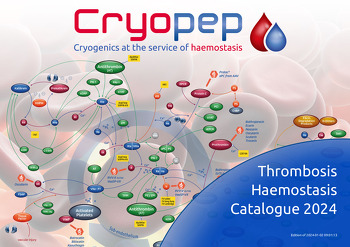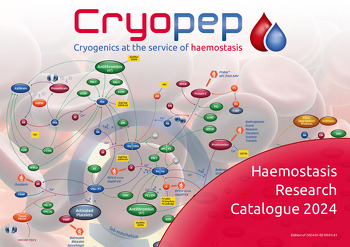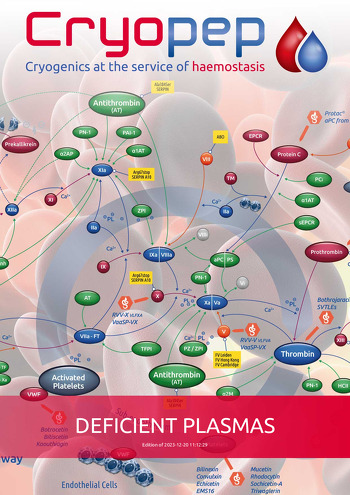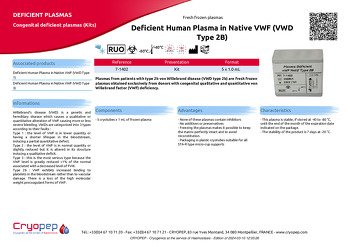Willebrand's disease (VWD) is a genetic and hereditary disease which causes a qualitative or quantitative alteration of VWF causing more or less severe bleeding. VWDs are categorized into 3 types according to their faults :
Type 1 : the level of VWF is in lower quantity or having a shorter lifespan in the bloodstream, inducing a partial quantitative defect.
Type 2 : the level of VWF is in normal quantity or slightly reduced but it is altered in its structure inducing a qualitative deficit.
Type 3 : this is the most serious type because the VWF level is greatly reduced <1% of the normal associated with a decreased level of FVIII.
Type 2b : VWF exhibits increased binding to platelets in the bloodstream rather than to vascular damage. There is a loss of the high molecular weight procoagulant forms of VWF.
- This plasma is stable, if stored at -40 to -80 °C, until the end of the month of the expiration date indicated on the package.
- The stability of the product is 7 days at -20 °C.
- None of these plasmas contain inhibitors
- No additives or preservatives
- Freezing the plasmas makes it possible to keep the matrix perfectly intact and to avoid reconstitution.
- Packaging in plastic cryotubes suitable for all STA-R type micro-cup supports
- 5 cryotubes x 1 mL of frozen plasma
























